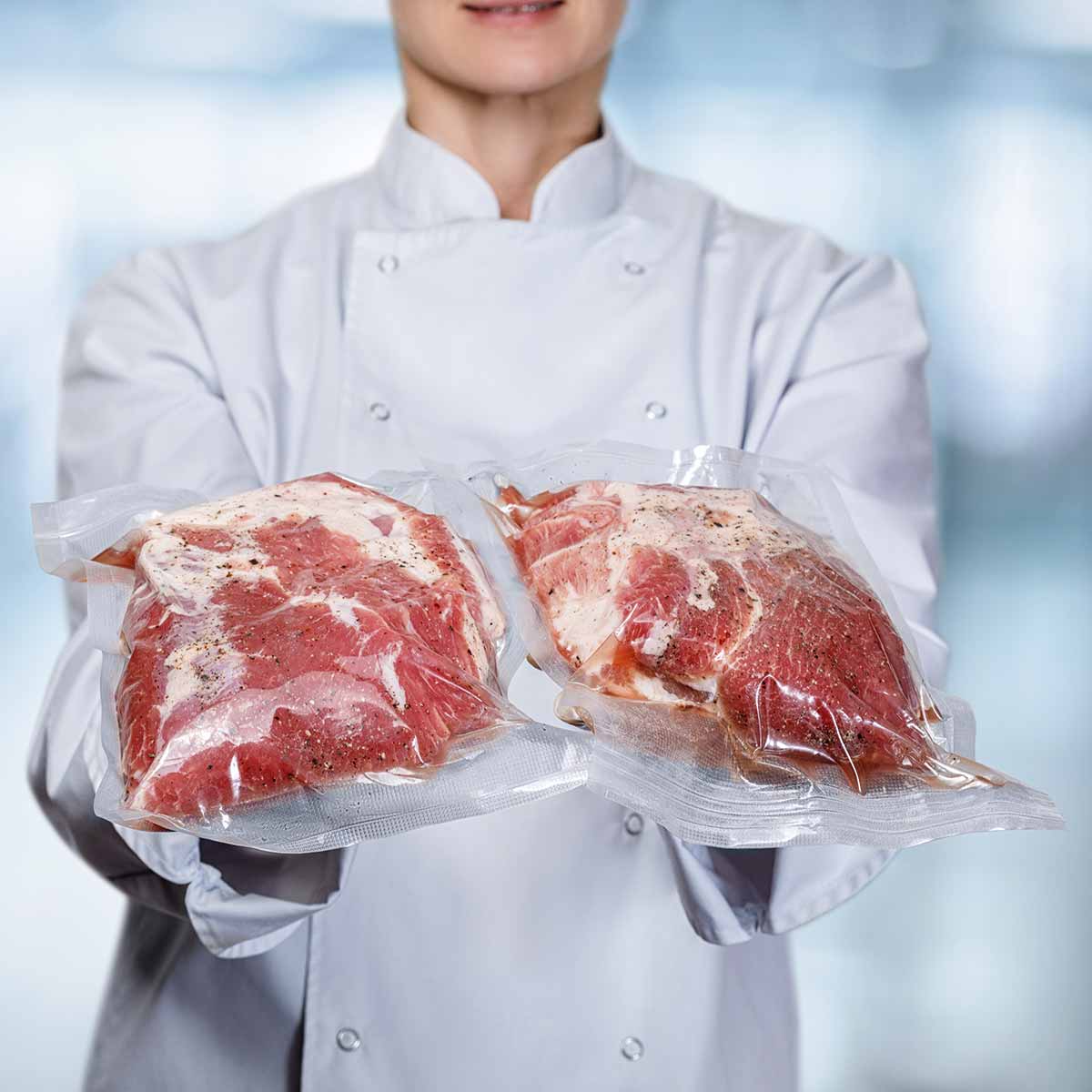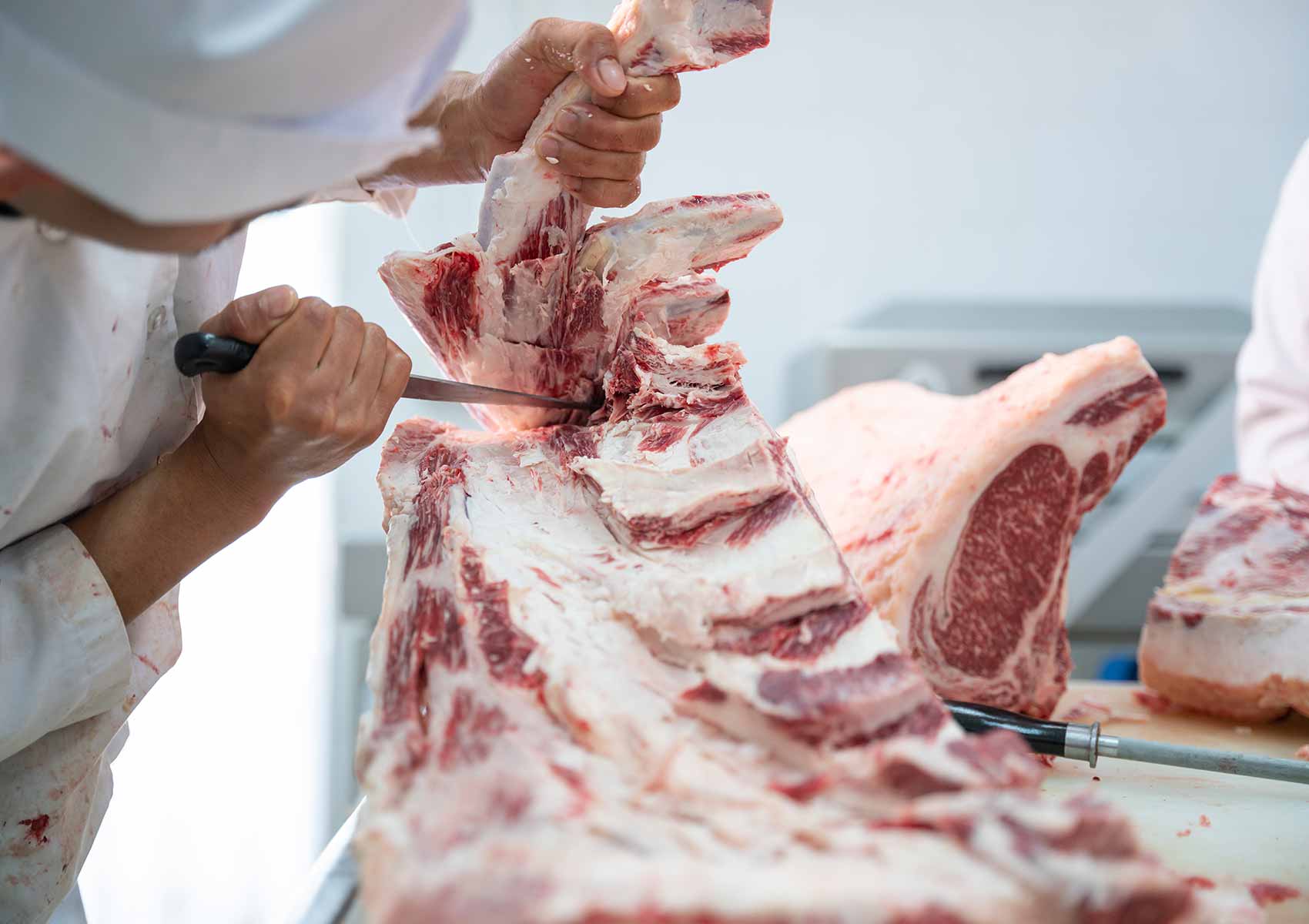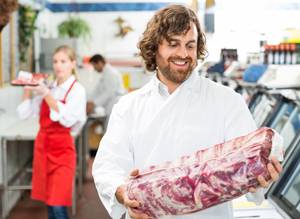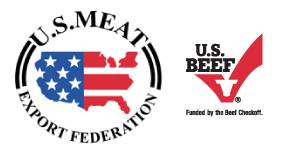Storage & Handling
Accepting a shipment of beef
A close inspection of each shipment of beef will ensure that it arrives in good quality and meets purchasing specifications.
ACCEPTABLE Meat: For fresh beef (not in vacuum packaging)
Is bright cherry red. Is firm and elastic to the touch. Arrives at 41°F or below.
ACCEPTABLE Meat: For vacuum-packaged beef
Is dark red, even slightly purplish, in color. Arrives with the vacuum sealed; any sign of leakage indicates the seal has beenbroken, and the meat is unacceptable. May have an unusual odor; this is due to a lack of oxygen and is not a sign of spoilage. The odor disappears after vacuumpackage is opened, 15 to 30 minutes.
UNACCEPTABLE Meat: Is brown or greenish; contains brown, green or purple blotches; or has black, white or green spots. Has a slimy, sticky or dry texture. Arrives in broken cartons, has dirty wrappers, or torn packaging


Keep it cold
- Place meat in cooler or freezer immediately upon delivery.
- For best quality and shelf life, store fresh
- beef at temperatures between 28°F and 32°F.
- Store frozen beef at or below 0°F.
- Fresh, unopened, vacuum-packaged meat usually has about 21 days of refrigerated storage life (ground beef, 14 days). Once the package is opened, storage life decreases to 2 to 3 days.
- It’s best to store meat alone in a cooler, as the product absorbs odors from other foods. However, if space does not allow, keep beef below ready-to-eat foods in refrigerated storage. This will prevent the raw product from dripping onto prepared foods and contaminating them.
- For beef that is properly frozen, storage life can range anywhere from 6 months at 0°F to 12 months at -5°F.
- DEFROSTING BEEF: Defrost foods in a cooler…never at room temperature.
- Thaw frozen beef at refrigerator temperatures for 15 to 24 hours. Do not thaw meat at room temperature, on a counter top or in warm water.
Keep it clean
Meat is basically sterile until it comes in contact with knives, grinders and other equipment. Therefore, anything beef comes into contact with should be kept clean and sanitized.
TO CLEAN involves physically removing particles and food matter from the surface of grinders, knives, cutting boards, slicers or other equipment used to prepare meat. Soil should be loosened and rinsed away using a cleaning agent under sufficient pressure (such as from a brush, scrubbing pad or water spray).
TO SANITIZE is to reduce the amount of micro-organisms, such as bacteria, to safe levels; sanitizing is one step beyond cleaning, and in the case of food-contact surfaces (grinders, knives, slicers, cutting boards, etc.), is a necessary step. Items to be sanitized must always be cleaned first.
There are two ways to sanitize: immersing the object in 171°F water for 30 seconds, which is hot enough to kill bacteria; or treat with a chemical sanitizing compound.
Chemical sanitizers are widely accepted in the foodservice industry. Wash hands thoroughly, immediately before and after handling raw meat. Keep thermometers clean and sanitized. Keep storage areas and counter surfaces clean and sanitized.

